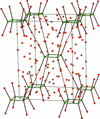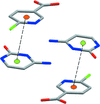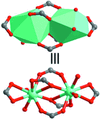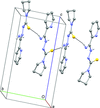issue contents
March 2018 issue

Cover illustration: Bis[2,6-bis(1H-benzimidazol-2-yl)pyridine]nickel(II) units combine via sulfate bridges to produce porous solids, connected via strong charge-assisted hydrogen bonds. The frameworks are analyzed using crystallographic and topological approaches. See Harvey, Suarez, Zolotarev, Proserpio & Baggio [Acta Cryst. (2018), C74, 351-359].
research papers
























Structure determination of phase II of the antifungal drug griseofulvin by powder X-ray diffraction
























 journal menu
journal menu








































